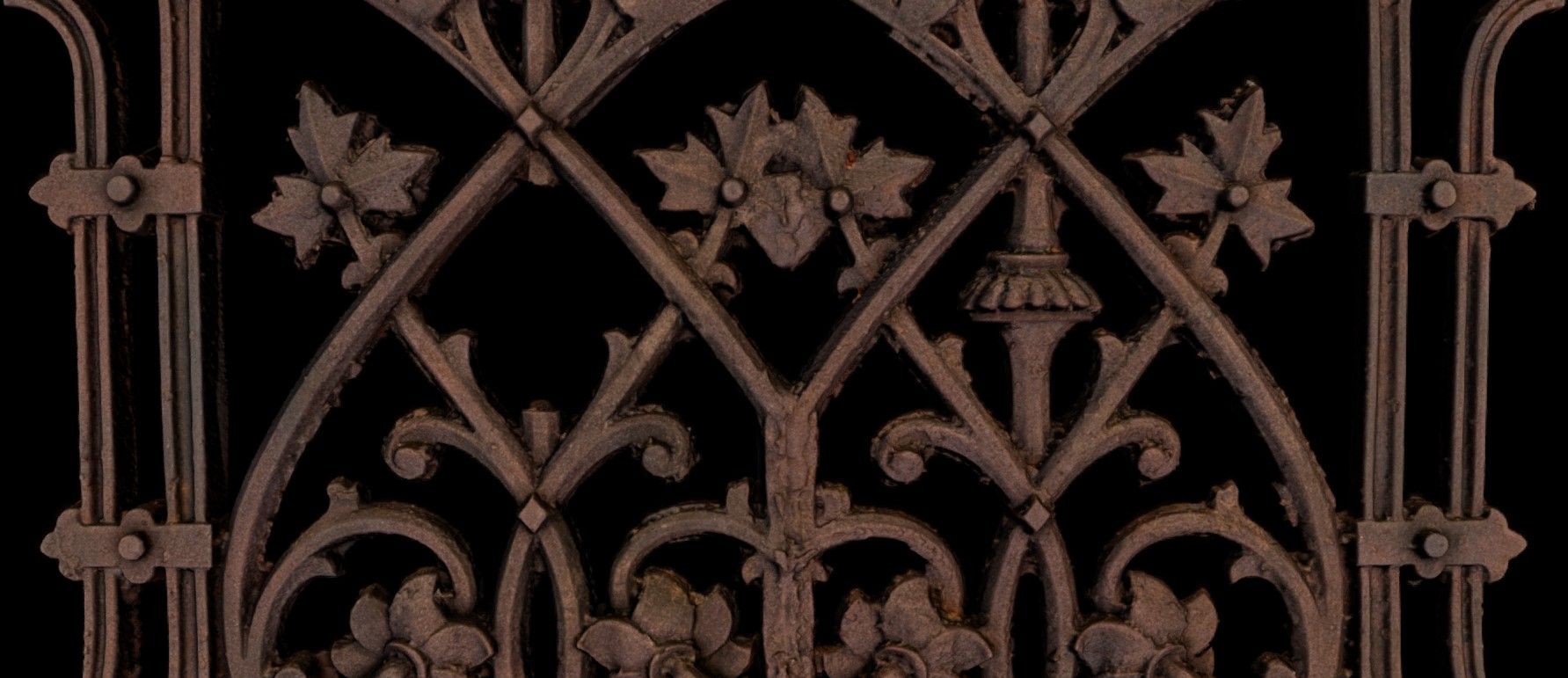King's Cross: bohemian life In Sydney
In September 1927 Elizabeth Bay House was put up for sale, its former estate relentlessly subdivided for apartment buildings, which were rising in Kings Cross and its surrounding areas.
The house, isolated on its island block, was purchased by lawyer, property developer and arts patron, Arthur Wigram Allen (1862–1941). Allen was approached by Royal Academician, George Lambert (1873–1930), suggesting that he present the old ‘Macleay House Mansion’ to the nation as artists’ studios.
Allen saw Elizabeth Bay House primarily as an investment but allowed the Melbourne-based academic portraitist, Sir John Longstaff (1861–1941) the occasional use of a studio there. Longstaff retained his studio after Allen sold the house to the Bank of New Zealand in 1932 but was joined by younger artists, Wallace Thornton (1915–1991) and Wolfgang Cardamatis (b1917) who held famous parties ‘amidst the ruins of colonial splendour.'
Kings Cross’ many old mansions provided artists’ studios and lodgings during times of social and economic change. Sculptor, Arthur Fleischmann (1896–1990) and painter, Justin O’Brien (1917 –1996) enjoyed panoramic views of the harbour from Bomera in Potts Point, when it operated as a boarding house c1939–1942. Sculptor, Robert Klippel (1920–2002) had a studio in the picturesque stables of Wyldefel, Potts Point in the 1950s. Sali Herman's Bohemian Home (1949) depicts 151 Dowling Street, where a succession of artists were housed including Alannah Coleman in the 1940s and David Strachan from 1960 to 1962.
It was Kings Cross’ dense urban character that provided an appropriate environment for bohemians who abandoned conventional social ties in the pursuit of intellectual freedom, or spiritual freedom in the case of Rosaleen Norton, the notorious ‘witch’ of Kings Cross. Kings Cross’ modernity was conducive to those wanting to bring about artistic, intellectual or social change. Photographs such as Max Dupain’s Kings Cross Rush Hour (1938) illustrate the turbulent, first-stop-east-of-the-city junction which existed before the opening of the William Street tunnel in 1975. From the 1930s onwards the Cross had its own cinema and repertory theatre, its cafes stayed open after 11pm and its nightclubs were the place to go after city clubs closed. Between 1916 and 1955 when hotels closed at 6pm, Kings Cross was the place to buy sly grog. The control of the supply of alcohol to nightclubs and corner shops was fought over by razor gangs. Prostitutes cruised the dirty ‘dirty half mile’ in William Street. A reputation for danger and illegal activities appeared to define the Cross.
The Cross with its metropolitan character attracted European refugees. Walter Magnus (1904–1954) opened the Claremont Restaurant in Darlinghurst Road in 1938. The Claremont’s cuisine continentale included previously unheard of dishes such as goulash and Vienna schnitzel. It was a mecca for celebrities. Magnus supported William Dobell (1899–1970) who was living in reduced circumstances on the top floor of a building on the corner of Darlinghurst Road and Roslyn Street and was the subject of Dobell’s stylized portrait Chez Walter (1945).
In 1941 Elizabeth Bay House was converted as 16 ‘bed-sit’ flats. The flats were furnished, thereby attracting a higher rental. In deference to the quality of Elizabeth Bay House antique pieces were provided. Otherwise, the Elizabeth Bay House flats with their gas ring cookers partitioned off in the corners of rooms and general lack of refrigerators (owing to a reliance on corner shops and delicatessens) were little different to cheap accommodation throughout Kings Cross. A caretaker was resident on the ground floor to supervise the comings and goings of her tenants and their guests.
The Second World War had a major impact on Kings Cross. The Japanese submarine attack reinforced a sense of danger and a need to live for the moment. Donald Friend (1915–1989) witnessed the attack on Sydney Harbour of 31 May 1942 from his Elizabeth Bay House flat. Friend’s illustrated diaries include five sketches of the Elizabeth Bay House saloon stair believed to date from around 15 July 1942. Herbert Badham’s Kings Cross Fair with its Uncle Sam totem figure is a comment on the worship of American wealth and popular culture. From 1967 the Rest and Recreation program brought thousands of US servicemen to Kings Cross with big spending allowances. This led to the proliferation of sex shops and more visible street prostitution in Darlinghurst Road. The character of the Cross became increasingly associated with the seedier aspects of Sydney’s night life.
In many cases, bohemian ‘borrowed glory’ is the result of patronage. Frank and Thelma Clune provided studio space and lodgings in the Clune Gallery (corner of Macleay Street and Challis Avenue) and an adjacent house to a number of artists, including John Passmore (1904–1984). In 1970–1972, renamed as the Yellow House, it became home to Martin Sharp, George Gittoes, and John Olsen. Sharp’s naming of the Yellow House alludes to Van Gogh's letter to his brother expressing a dream of a sun-drenched studio for a community of artists.
The character of Kings Cross is still changing, having become highly desirable again. Its new apartments are of the quality of their Art Deco forebears of the 1920s and ’30s. The present gentrification is accompanied by considerable financial investment. Perhaps in this new phase ‘borrowed glory’ is no longer required?
This article was written by former curator of Elizabeth Bay and Vaucluse houses, Scott Carlin and was first published in Insites, Spring 2003, coinciding with the exhibition Kings Cross – Bohemian Sydney.
More stories

Cast in cast out: recasting fragments of memory
An in-depth look at Dennis Golding's experiences and childhood memories of growing up in ‘The Block’
![Government Printing Office; NRS 4481, Glass negatives. NRS-4481-4-44-[AF00194836] Immigration Barracks Sydney, August 1871 [Department of Public Works]](https://images.mhnsw.au/fotoweb/embed/2024/03/b437216ff79d433da2d3b92c8bb24e51.jpg)
Conservation
Conservation in action: Hyde Park Barracks northern range refurbishment works
In collaboration with experienced heritage consultants and traditional tradespeople, MHNSW is undertaking conservation works to the northern range buildings
Published on